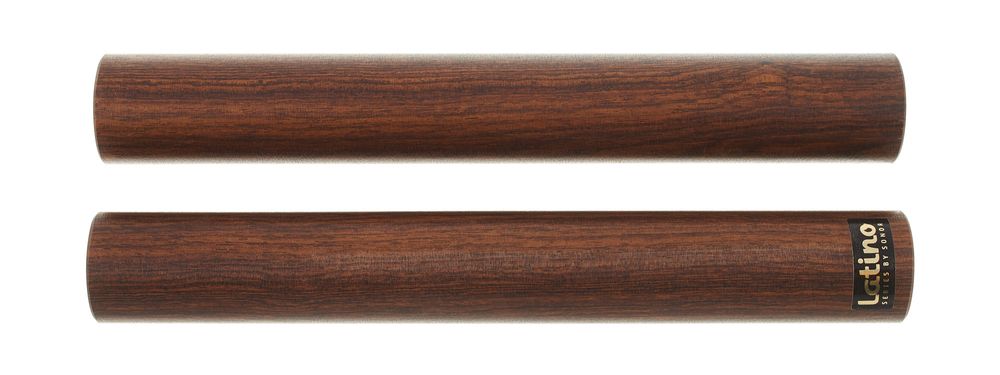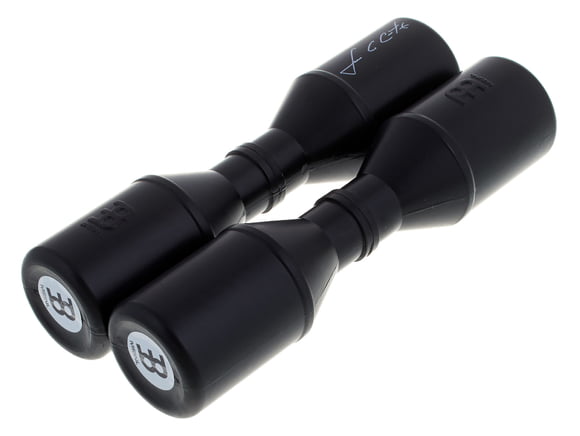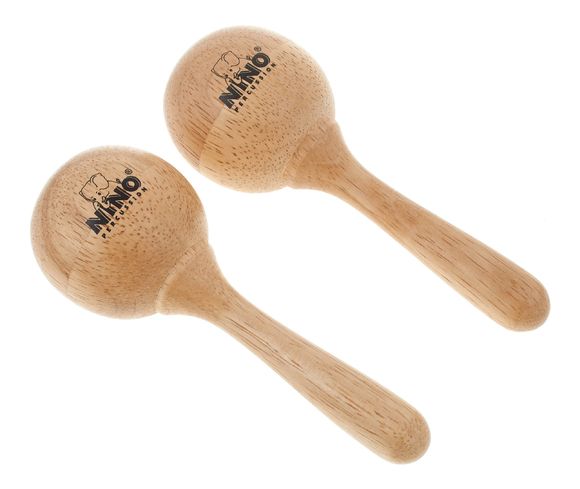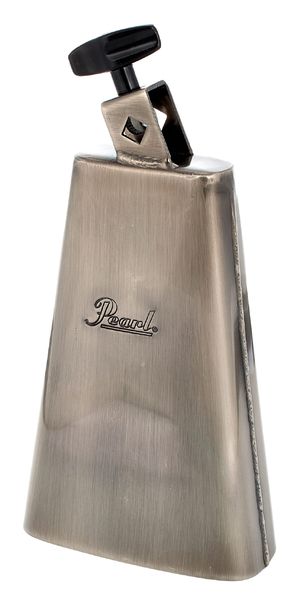2. Small Percussion Instruments
Percussion instruments are found in almost every culture in the world. Due to the incredible variety of percussion instruments it will be impossible to discuss all of them. Well focus on the most widely used and important percussion instruments. Lets start our exploration with small rhythm instruments.
The claves are among the simplest handheld percussion instruments - simply striking them together produces their unique timbre. They are made from either soft or hard woods; hardwoods such as rosewood produce a very clear and cutting sound while softer woods such as acacia produce a more muted tone. Holding the claves loosely while striking them in cupped hands will help enhance their resonance and volume. Claves are commonly used in Latin music styles and play various regional clave rhythms, which create the underlying rhythmic structure that the entire percussion arrangement is based upon.

A pair of claves
Shakers transcend styles and are a necessity for every percussionist: many professionals own at least a dozen, made from a wide variety of materials for a great variety of sounds. Essentially, a shaker is a container filled with some material such as sand, pebbles, seeds or grains and is played by shaking the container. The shape and material of the container and the size and hardness of the contents create wide variations in sounds. Some shakers are produced in comical shapes such as tin cans, fruit, and eggs, though they are commonly created in a cylindrical form. Traditionally, they were often made from dried gourds.

Shakers come in many shapes and sizes
Maracas are related to shakers, but differ in that they have handles attached for ease of playing and are closely associated with Latin American music (particularly of Brazil, Colombia and Venezuela). Traditionally, maracas made of wood but today many are made of plastic, which produces a brighter and louder sound. Maracas are generally louder than most types of shakers.
Rain sticks originate from South America and are also related to shakers and maracas, but are much longer and create a rushing sound as seeds or small pellets fall through chambers inside of the tube creating a sound similar to falling rain. The tube may be made from bamboo or dried cactus but modern versions are often made of plastic.

Wooden maracas
A variety of small wood blocks are played with a small stick or mallet. These include the guiro, wood blocks, temple blocks and the reco reco. The guiro may be tapped but its characteristic rasping sound is produced by dragging the stick across grooves on its surface

A guiro
Another group of percussion instruments are created from metal bells, rods and tubes played in a variety of ways. Triangles, bar chimes and Wind Chimes are members of this family of instruments. These are often played with a stick or mallet, either by striking individual bars or dragged across a range. These instruments tend have a high pitch and sustaining, airy sound. When striking triangles or bells, the hardness of the stick or mallet has a great effect on the tone - a harder mallet creates more impact and a brighter tone while a softer one creates a more muted attack. Wind chimes, made from solid rods of brass or aluminium (or even hollow bamboo tubes) create their sound as they bump against each other. They are designed to easily move back and forth and different materials create surprisingly distinct timbres. Cowbells are commonly played with sticks and have a loud and cutting sound. They have found their way into many classic rock songs and even popular culture (More cowbell!). Originally they were hand-held, but most modern cowbells are designed to be mounted on a drum kit or percussion stand.

Cowbell
Percussionists also use small whistles. This is the only reason to mention them here, since there is nothing actually percussive about their use. Samba whistles are one of the common types of whistles percussionists use.






